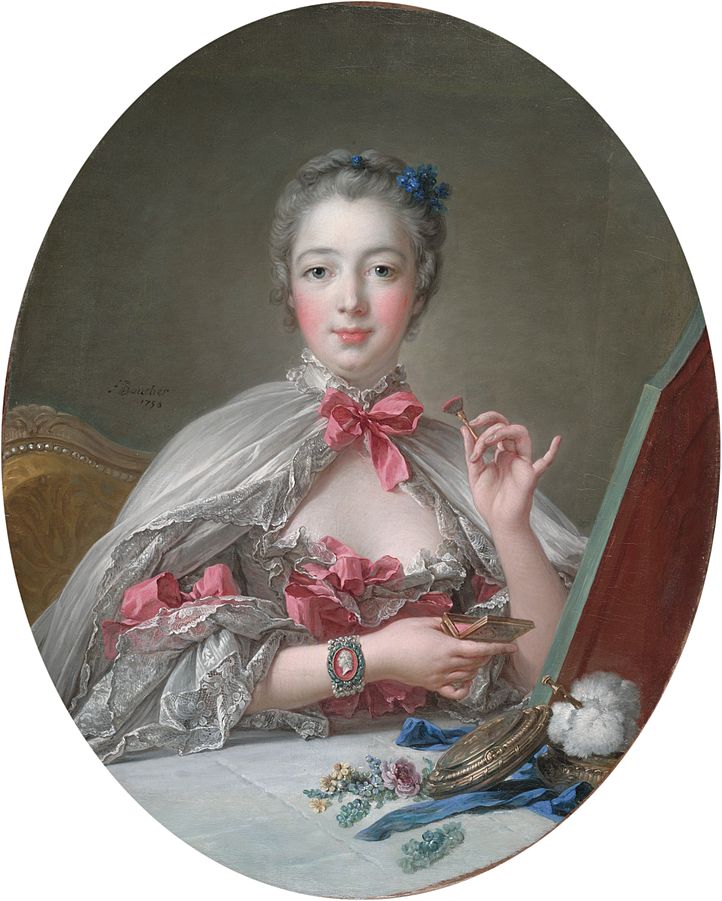Marquise de Pompadour at her Toilette
I thought to contrast with last month’s dark Caravaggio, for November I would pick something light and fluffy – two words synonymous with Rococo. Contrary to what I feel great art should be, I can’t help but love Rococo. Obsessed with beauty, sensuality and all things frilly, the style was a reactionary evolution of the Baroque in Europe. In France, it materialised through artists such as Jean-Antoine Watteau, Jean-Honoré Fragonard and François Boucher (1703-1770) – here depicting Rococo personality the Marquise de Pompadour at her Toilette (1750).
Depicted in contemporary style the Marquise de Pompadour (born Jeanne-Antoinette Poisson in 1721) is porcelain-skinned with powdered hair, pouty rosebud lips and rouged cheeks. She exudes youth (she is depicted here in her 30s) and beauty, fresh and doll-like. We have caught her at her toilette (French for the process of grooming and dressing), an important part of the day that would take place in a lady’s boudoir, accompanied by her confidants. Not yet fully dressed, she wears a beautiful white lace dress with pink ribbons, covered by a protective cloak or peignoir. Frozen in her pose, we have caught her as she raises her left hand gracefully, about to apply more powder to her already deeply flushed cheeks, her plump little finger extended. Her right hand holds a compact, and on her wrist is a cameo with King Louis XV’s profile – a tell-tale sign of her position at court. Sitting before a mirror presumably in her boudoir, we see what she sees in her reflection. There are a number of objects on her vanity table; a posy of flowers, some of which have been put in her hair, a feathery powder puff and a blue ribbon, all of which can be read as symbols.
With Rococo everything is over the top; colours are sweetly pastel and milky, the textures are light and almost tactile in their detail (see the lace and feathers in particular), expressions that are an equal mix of innocence and knowing. I feel the viewer can almost smell her perfume, fully immersed into her bedroom’s atmosphere. But for all the frivolity and sentimentality of the painting, the sitter had certain power at court and was a great asset to the King. After catching the King’s eye at a ball, she was installed in Versailles and remained a life-long companion of the King until her death from tuberculosis in her early 40s. She was a keen patron of the arts, Boucher in particular, and was associated with figures of the Enlightenment such as Voltaire. Queen Marie is said to have remarked, “If there must be a mistress, better her than any other.”

